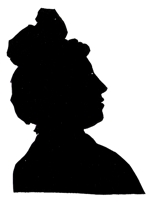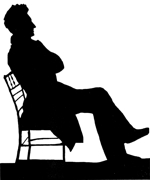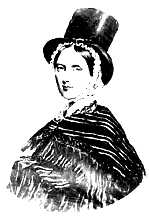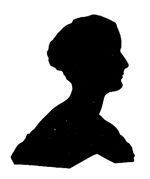Lady Llanover: Friends and Influences
Llwydlas and Gwenynen Gwent.
(Lady Elizabeth Coffin-Greenly and her links with the Llanover circle)

Sian Rhiannon Williams was educated entirely in Wales, first at Ysgol Gymraeg Rhymni and Ysgol Gyfun Rhydfelen, and then at Aberystwyth University where she was a History graduate. Continuing at Aberystwyth, her research into the history of the Welsh language in Gwent led to her Ph.D and resulted in the publication of her book Oes y Byd i’r Iaith Gymraeg, an examination of the position of the Welsh language in the industrial society of Monmouthshire during the nineteenth century (1992).
On leaving University she worked as a producer for BBC Wales until she was appointed lecturer at the University of Wales Institute (UWIC), Cardiff. Subsequently appointed Senior Lecturer, she is now Programme Director of History Education.
Sian’s research interests include the history of the Welsh language and women’s history. Lady Coffin-Greenly (1751-1843) of Titley Court, Herefordshire, a Welsh speaker who adopted the bardic name Llwydlas and who was an intimate of the Llanover circle, was the subject of Sian Rhiannon Williams’s article Llwydlas, Gwenynen Gwent a Dadeni Diwylliannol y bedwaredd ganrif ar bymtheg in Cof Cenedl XVI.
With Carol White, she co-authored Struggle or Starve – women’s lives in the South Wales Valleys between the two world wars (1998).
Carnhuanawc and Gwenynen Gwent

The distinguished historian Prys Morgan was born in Cardiff, but can trace his family’s roots back to Llangyfelach in 1600. His student years were spent at St John’s College, Oxford, but his academic career has been based entirely at the University of Wales in Swansea, whence he retired recently as Professor Emeritus. Currently he is joint-director of the Iolo Morganwg project at the Centre for Welsh and Celtic Studies, Aberystwyth.
He has been a valued member of various public bodies, including the Welsh Arts Council and Cadw, and is currently President of the Honourable Society of Cymmrodorion. He was President of the recent National Eisteddfod held at Swansea.
Prys Morgan’s writing, in both Welsh and English, covers a wide range of interests, from his 1975 study of Iolo Morganwg in the series Writers in Wales, and a book on Welsh surnames co-authored with his father, T J Morgan (1985) to The Eighteenth Century Renaissance (1981), Brad y Llyfrau Gleision (ed.1991), Wales – The Shaping of a Nation (1984), The University of Wales 1939-1993 (1997), A Bible for Wales – Beibl i Gymru (1988) and the Tempus Illustrated History of Wales (2000). His fascinating study of William Morgan’s translation of the Bible into Welsh (1588) has been digitised by the National Library of Wales and can be read on www.llgc.org.uk/drych.
The Welsh Hat

Michael Freeman began to take a serious interest in local history when he joined an excavation of the Roman town of Verulamium, St Albans at the age of 13, and worked on many excavations during the next five years. He read Archaeology at Cardiff, then joined Pembrokeshire Museums as a museum assistant. In 1984 he became assistant curator in Ceredigion Museum, and succeeded Dr John Owen as curator in 1990.
He recently published a book on the history of Aberystwyth after extensive research into the prints and photographs of the town in association with original research in the National Library (which is ten minutes walk from his home).
His main interest at present is in the representation of Wales in general and Ceredigion in particular by those who visited Wales during the 18th and 19th centuries. This has involved studying many of the images, diaries and reports produced by the visitors.
Currently, Michael Freeman is researching into the origins and development of the ‘Welsh National Costume’, in preparation for an exhibition to be held in the National Library of Wales and the Ceredigion Museum in 2008. His study of the Welsh Hat (about which surprisingly little has been published) is beginning to uncover many myths about its origins, manufacture and development. He will be publishing much of his work in progress on the internet in order to encourage others to contribute to the research, especially with regard to its place both in the past and the present, as an icon of Wales.
Lady Llanover, Maria Jane Williams and ‘Ancient National Airs of Gwent and Morganwg’

Morfydd Owen was educated at Lewis School for Girls, Hengoed, University
of Wales, Aberystwyth and Girton College, Cambridge. After a period of
study in Dublin she was appointed to a lectureship in the University College
of Wales and Monmouthshire, Cardiff, where she remained for twenty-four
years before moving to the Centre for Welsh and Celtic Studies, Aberystwyth.
She is now retired.
Known as an eminent Celtic medieval scholar, she received an Honorary
D Litt from the Universityof Wales in recognition of her contribution
to
Welsh medieval studies. With T M Charles-Edwards and Paul Russell,
she was Editor of The Welsh King and his Court (2002), reviewed as ‘a
major contribution to the study of Wales in the central Middle Ages’.
She is an Honorary Senior Fellow of the Centre for Welsh and Celtic Studies
and was a contributor to the centre’s Beirdd y Tywysogion series.
Whilst her research interests have been in medieval Welsh Law, Literature
and Medicine, her hobbies have included the folk-songs and traditions
of Glamorgan, and she chose this as the subject of her Presidential address
to the Cambrian Archaeological Association: A Hiberno-Cambrian Alliance:
T.M.Crofton-Croker and Maria Jane Williams. In 1827 she and Crofton-Croker
exchanged Welsh and Irish tunes, and in 1828 he published her collection
of fairy tales from the Vale of Neath as an appendix to his Fairy Legends
and Traditions of the South of Ireland.